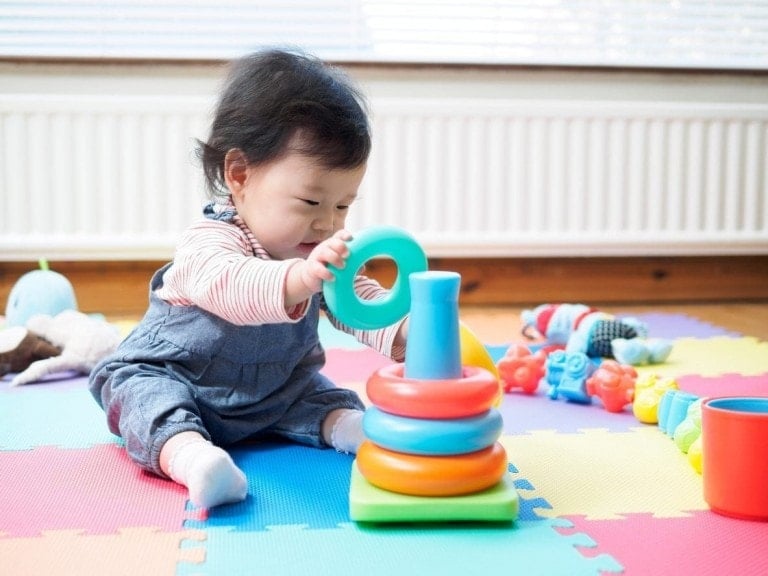Change is inevitable. Even when change is positive, that doesn’t mean it’s easy. It usually means some upheaval to our sense of structure and stability. Change is even more challenging for our little ones because they haven’t yet built their resilience, which comes from previous adverse life experiences they learn to deal with and cope with.5 Children also don’t have much control over their lives when significant changes occur, such as moving to a new house, their parents getting a divorce, or starting school.
A sense of routine or predictability helps kids feel safe and secure because they know what to expect.1 Feeling out of control or confused can overwhelm them because they feel unsafe and unsure and don’t understand what’s happening or why.2 This can feed into or exacerbate their distress. Looking at it this way, you can see why it’s difficult for some kids to cope with change. Luckily, there are ways you can help your child with this issue.
15 Strategies To Help Your Child Cope With Change
Depending on your child’s age or personality, you may see a range of behaviors in response to changes. They may have tantrums, regression, anger, detachment, defiance, etc.2,3 Or they can exhibit other nonbehavioral signals like bedwetting, psychosomatic complaints (sore tummy, headaches), or even changes to academic engagement and performance.3,4 To help your child cope with changes of all shapes and sizes, here are some strategies you can use:
1. Acknowledge the Big Emotions
Acknowledge your child’s feelings to give them context and understand their emotional response to change. When we help our kids understand their internal world (feelings), they feel more in control and confident in their capacity to cope. This is because they better understand what’s happening to them and why.6 It sounds fancy, but it’s so simple: name the emotion you see your child experiencing as a result of change, or normalize beforehand what big feelings might come up.
For example, you can say, “I can see you’re so sad that we have to leave the park. You weren’t ready to head home, and it’s making you feel upset.” Or, “You’re starting school next week, which is a big change. When things change, it’s normal to have lots of big feelings or even different feelings all at once. You might be excited, worried, and scared, and that’s okay!”
2. Listen . . . And I Mean Really Listen
Make some time when you aren’t distracted by cooking dinner or have another task to complete. Then, sit down, talk to them about the change, and listen to what they say. Listening doesn’t involve coming up with solutions or counteracting their thoughts/ideas with truth or reality. It means actually hearing what’s concerning your child (real or not). Make sure you sit somewhere quiet, get down to the same level as them, and make eye contact. Show you’re listening by reflecting on what you hear (“I hear you’re worried; it sounds like that made you really mad”) and using minimal encouragers (“hmmm,” “aha,” “I see”).7
3. Give Them Warnings!
Children often require many warnings (multiple times and in advance, where possible) before transitioning to a new activity.1 This can be a small transition (like going from lunchtime back to classroom activities) or a large transition (like moving houses).
Your child’s age and developmental level will determine how far in advance you need to warn them and how you might describe the change. Younger children don’t need as much warning, as they won’t have a lot of context for how the change might impact them. You also won’t need to provide as much detail as you would for an older child, who would need more information to give them context. Prepare them by letting them know what to expect or how the change might affect their normal daily life, but don’t over-explain it.
4. Stick to Routines
Be consistent and stick to routines where possible. If you can retain some old routines, your child will still experience a sense of security.1 For example, if you’re divorcing or your living arrangements are changing, you might still keep your nighttime routine of having dinner, taking a bath, brushing your teeth together, and reading a story.
5. Add Structure
If you don’t already have a routine, you can increase your child’s sense of stability by adding structure to their day so they know when to expect transitions and feel safe. Your routine doesn’t have to be complicated; just make sure to be consistent to help your child adjust. This can make things more predictable for them and allow your child to get used to the change happening in their life, big or small.1,8
6. Prepare Them for Change
If your child struggles with meeting new people or starting a new activity, you might start a countdown to help them know when to expect the change. You could also set a timer or establish a particular set of actions in the lead-up to change. For example, there might be a specific toy or game that helps your child feel happy and calm. You can bring that toy/game out when you give them a warning that it’s time to experience change. It could be a favorite teddy bear, some bubbles to blow, or a sensory toy they can pull, squish, or squeeze.
It could also be helpful to read a book or find another resource like a TV show (particular episode) that explores a similar change to what your child will experience in the future. These resources can gently introduce the topic and explore the characters’ feelings, which can help you start a conversation. All of this goes a long way toward normalizing the overwhelm associated with change.
7. Fill Your Child’s Cup
Everyone has needs that have to be met each day, and when we have full cups, we’re more resilient. People have needs like thirst, hunger, sleep, relationships (emotional connection), and safety. If we meet our needs, it reduces our stress levels.9,10 So, if you know you have an upcoming change, try to ensure your child’s cup is filled every day by taking care of their basic and emotional needs. This way, they can feel less overwhelmed and better able to cope.
8. Help Them Regulate Their Emotions
It’s essential to help your child regulate their emotions if they show distress associated with change. For instance, you can show them how to do calm belly breathing, run on the spot, or do star jumps. Essentially, you want to help them expel excess energy associated with stress and soothe them.
9. Walk the Walk
Model to your child how you deal with change. You don’t want to overwhelm your child or burden them with your own concerns about a change, but you can absolutely model and demonstrate how to cope with it.11 For example, you could say, “I’m a bit nervous about starting my new job, and it’s okay to be nervous. So, what I’m going to do to help myself feel better is take some deep breaths and hug you, if that’s okay? Hugs with you always make me feel happy!”
10. Increase Your Child’s Sense of Autonomy
Often, the big feelings associated with change result from feeling powerless and out of control. So, let them have a say in their daily lives. This doesn’t necessarily mean big decisions, but let them have a say in what clothes they might wear that day, what story you’ll read together before bed, what cereal they choose to eat, etc.
11. Identify Their Triggers
See if you can figure out whether your child has any triggers that particularly overwhelm them. It might be a change to routine or new sensory stimuli (like a new environment) that they struggle with.2,11 You don’t want to take away or necessarily remove the trigger; that’s not always possible. But knowing their triggers can help you put other protective mechanisms around them, like filling their cup before you know a triggering change will occur, warning them about the change, or putting structure around the situation.
12. Give Them a Chance To Cope
It’s hard not to rush in and try to take away or reduce our children’s big feelings. However, when we do this, we aren’t giving them the chance to learn to cope or develop their resiliency. Instead, sit with them and normalize their feelings. Help them develop self-regulatory strategies, and be present with them. Sometimes, simply acknowledging a feeling and being there for your child is enough!
13. Get the Family on the Same Page
Get family, friends, and other key caregivers all on the same page for how to support your child. This includes how they help your child carry out their daily routine, how they manage and respond to their emotions, and how they will explain the change. Consistency is key!
14. Seek Professional Help if They Aren’t Coping
Yes, change is tough, and we know it might bring up big feelings. However, if your child continues to struggle, or you see changes to their usual personality, sleep patterns, or eating patterns, or they seem markedly different than their “normal” selves, don’t hesitate to seek professional support for your child.
15. Attend to Your Own Self-Care
Children pick up on your emotions, so make sure you also manage your own well-being during a period of change (as the change is likely to impact everyone in your family). Our kids need us to be healthy in every way so that we can support them. So, ensure you’re eating right, exercising, and taking time to address your own well-being.
Whether big or small, transitions are often tough for kids, leading to some pretty big feelings that they may need help navigating. It’s important to be there for your child to help them cope with change in healthy ways. By implementing the strategies outlined in this article, you can show them what to do when they feel out of control in their world and teach them positive coping mechanisms that will serve them both now and later in life.



































